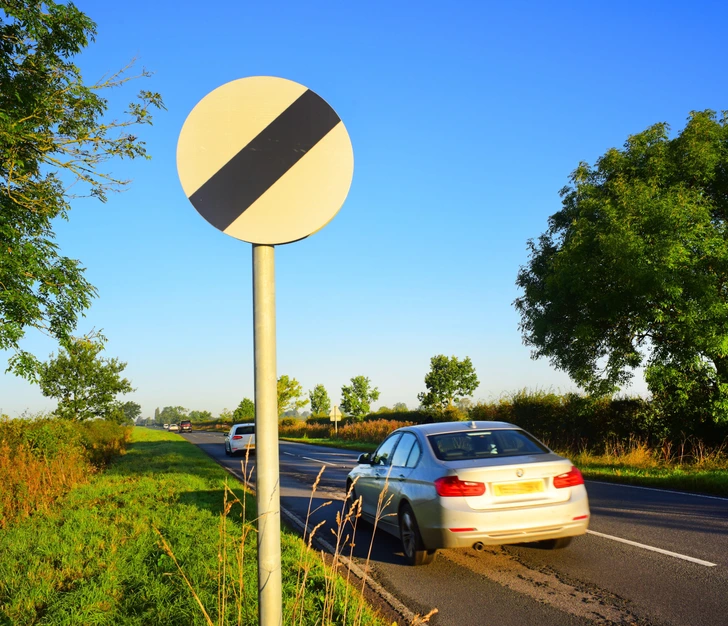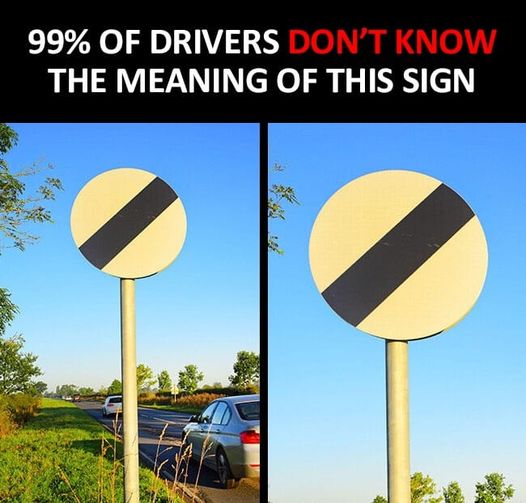In the United States, drivers encounter a wide range of road signs that guide them in obeying traffic laws and ensuring road safety. One sign that may catch the eye, particularly for those who have traveled abroad, is the white circular sign with a black diagonal stripe. While this sign is commonly associated with the national speed limit in some countries, such as the UK, its meaning and usage differ in the U.S. context. This article explores what this sign represents and how it fits into the broader landscape of speed regulation on American roads.

The U.S. Road Sign System: A Quick Overview
The U.S. follows the guidelines set by the Federal Highway Administration (FHWA) under the Manual on Uniform Traffic Control Devices (MUTCD). These guidelines ensure that road signs are consistent across states, making it easier for drivers to understand and follow traffic regulations no matter where they are. The MUTCD prescribes specific colors, shapes, and symbols for signs that convey different types of information, including speed limits.
The White Circular Sign with a Black Diagonal Stripe: A Foreign Concept in the U.S.
Unlike in the UK and some other countries where the white circular sign with a black diagonal stripe signifies the national speed limit, this particular sign does not have a direct equivalent in the U.S. In fact, U.S. road signs differ significantly in both design and meaning. American speed limit signs are rectangular and display the maximum speed in miles per hour (mph) using clear numerical figures. These signs are typically black and white, with the speed limit prominently displayed in the center of the sign.
The concept of a “national speed limit” sign is not used in the U.S. Instead, speed limits are posted explicitly, leaving little room for interpretation. When entering different types of roads, such as highways, residential areas, or school zones, drivers will see signs indicating the specific speed limit for that stretch of road.
How Speed Limits Are Managed in the U.S.
In the United States, speed limits are established by state and local governments based on factors such as road conditions, traffic patterns, and safety concerns. There is no single “national” speed limit that applies universally across all roads in the country. Instead, speed limits can vary significantly from state to state and even within different regions of a single state.
- Interstate Highways: Typically have speed limits ranging from 55 mph to 75 mph, depending on the state and specific roadway conditions. In some rural areas, speed limits can be as high as 80 mph or more.
- Urban Areas and Residential Streets: Speed limits are generally lower, often between 25 mph and 35 mph, to account for the higher density of pedestrians, intersections, and potential hazards.
- School Zones: These areas have even lower speed limits, often reduced to 15 mph or 20 mph during school hours, to protect children.
Why Understanding the Difference Matters
For U.S. drivers, especially those who have traveled abroad or encountered international driving content, it’s important to understand that the white circular sign with a black diagonal stripe does not apply in the U.S. context. Instead, drivers should focus on the rectangular speed limit signs that explicitly state the maximum speed allowed. These signs are positioned strategically along roads to provide clear guidance.
Conclusion
While the white circular sign with a black diagonal stripe is an important indicator of national speed limits in countries like the UK, it has no equivalent in the U.S. road sign system. American drivers are instead guided by clearly posted numerical speed limits, ensuring that they can easily comply with traffic regulations no matter where they are driving. Understanding the differences in road sign systems between countries is essential for safe and legal driving, particularly for those who may drive internationally or encounter different traffic signage through media or travel.
“The white circular sign with a black diagonal stripe indicates the national speed limit on the upcoming road stretch, overriding any previous speed limit signs.”
This traffic sign serves as a crucial reminder of road regulations, ensuring safe and efficient travel. Understanding its meaning is essential for all drivers navigating the roads.




